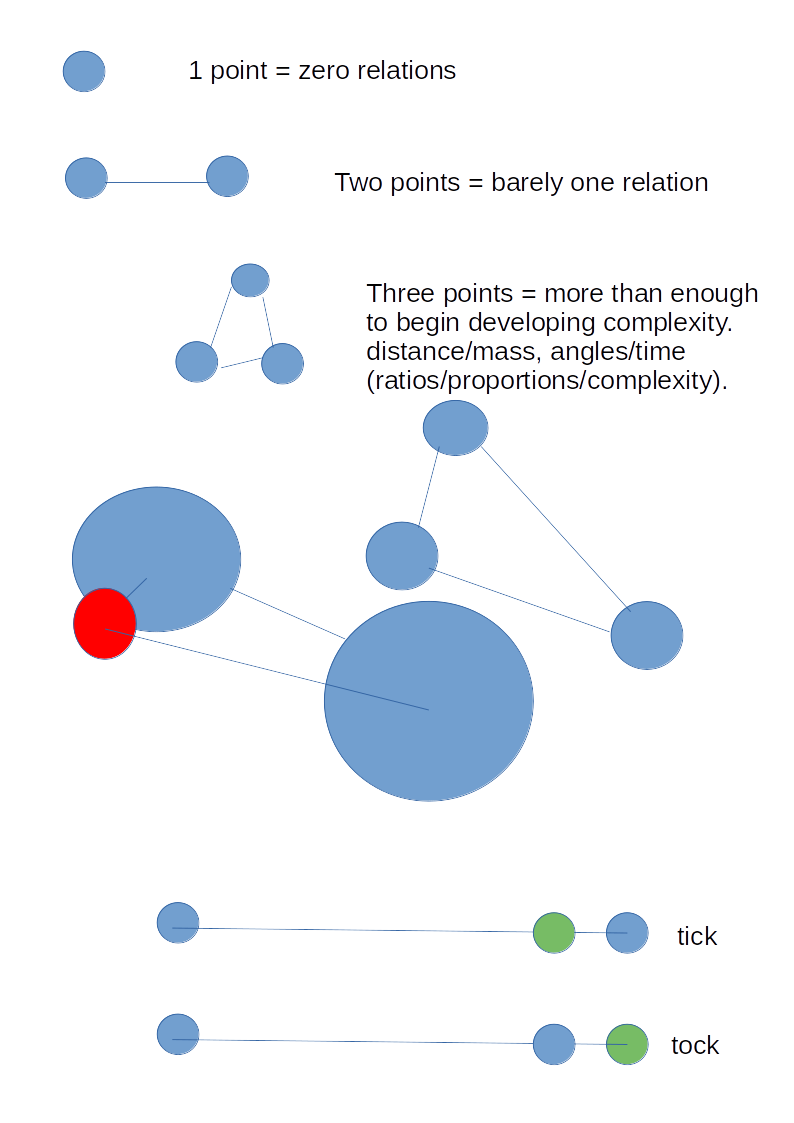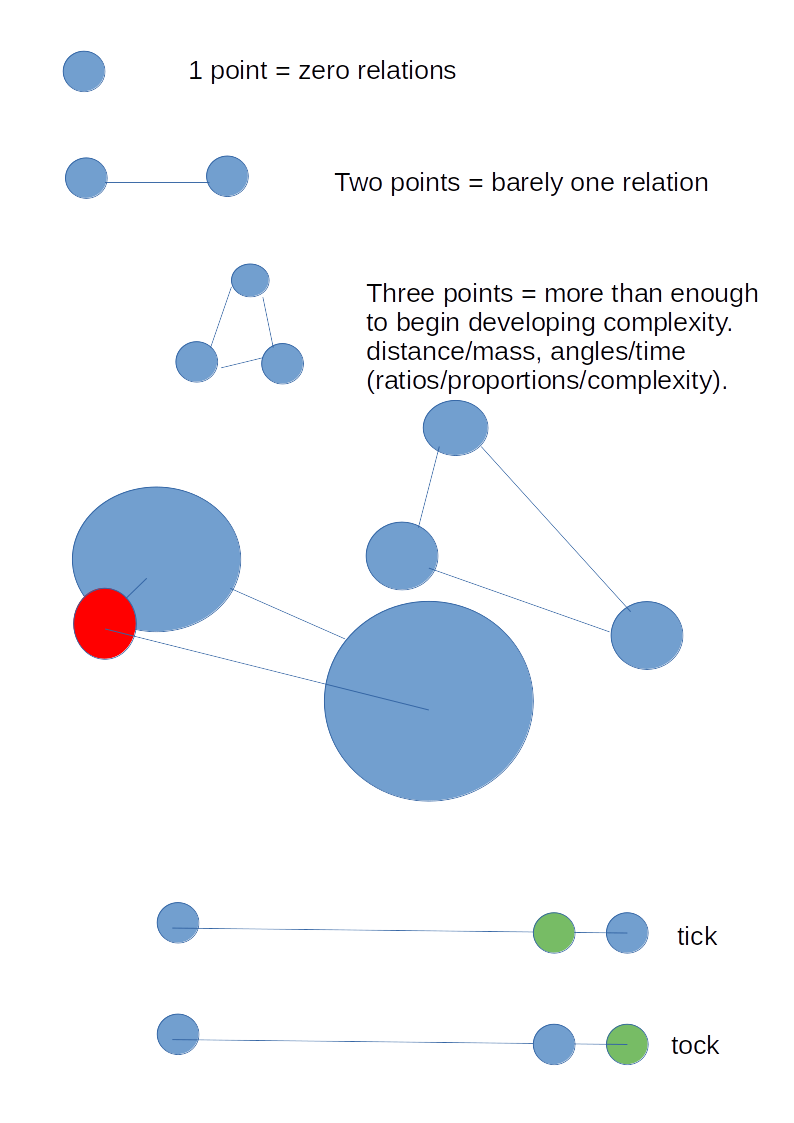
Minimum viable product
In product development, defining or outlining a “Minimum viable product” (MVP) is a key part of the process used to develop a going concern in business. It's a tactic of specialisation, and is kin to core business as a strategy. Today I am using it as a type of Anthropic principle, where when we ask, say, “why is the sky blue?” part of the framing of our inquiry, is to accept (rather than blithely assume) that we wouldn’t be here at all otherwise. I.E the universe is a minimum viable product for humans to be self-conscious. We are special because we are not special.
This is not a telology. There is no guarantee. You local luck is not intentionally directed, even if you are lucky enough to feel that it is. It is all very complex.
The following notes carry on in digesting The janus point by Julian Barbour. They also move on from my scratchings at Is the universe a calculator? a couple of weeks ago, on how tensegrity is a better model or metaphor for our physics than a space-time crystalline grid.
Tensegrity is not a force BTW, it is an outcome of relations. I mean, these relations might form a crystal-like presence, so the space-time grid confusion is understandable. But. A space-time grid is one too many things.

The universe as we known it has three dimensions because that is the minimum number in which complexity arises to such an extent that entropy can be experienced (locally), and within those flows and gradients life and consciousness as we know ourselves can happen as we experience entropy as time. (Three points in two dimensions is almost there but I suspect complexity therein is not very persistent-- quantum foam as an example.)
As such the relationship between time and complexity is key. Entropy is a happy outcome. Epiphenomenal to a physical creation but vital for life & consciousness.
One point has no relations.
Two points has one relation. It has almost no ratios. Physics is impossible as we know it. It is too simple.
Three points in three dimensions has many relations with the option of a proportion or two between those ratios, including time as an outcome. Time arises out of 'complexity', out of complex relations and their proportions.
How many points are there in the universe? How do they vary: mass, spin, charge etc? How do they aggregate? Do they pop in and out of existence from a quantum foam? How does that affect the change in complexity? And the derivatives of changes in complexity? What are the options here?
(Is there a Black-Scholes formua for correcting/putting/pushing Hawking radiation at a black holes singularity horizon?)(Just look at the complexity now possible at the local level when one mixes one's metaphors— chomp).
If the universe expands how does that affect the complexity of relations? What is the relationship between the complexity of relations and an expansion of the universe?
Three dimensions are the minimum viable product for physical complexity (entaxy) and entropy to arise (see Occam’s razor) into the universe we see before us. Time arises within that complexity, now you can call and number time as a dimension, and thus do your favourite mathematics (string theories, membrane cosmologies, a dimension for each force we discover etc etc) until they do not test out in the lab no more, but with a MVP framework: time is immanent to the physicality of the universe. This model is more parsimonious than giving every outcome its own dimension (even if that is a good way to keep track of stuff, when it is turned into metaphor it may likely lead us astray.)
Two points are not enough for time to arise within it as a system. So then, even two dimensions plus time, while it is a nice back-formation from our [(crystalline space-time grid metaphors) minus one] as a thought experiment, is unlikely to be enough perhaps to support enough complexity to allow for time.
You could have four or more physcial dimension for a universe, chances are they are not necessary for life as we know it, (again see Anthropic principle and Occam's Razor). They are more unlikely. And perhaps their complexities are not just hard for us to imagine, but 'unimaginable' in their own time and place. Or so it looks from the place from which we ask these questions. (Everyone go read Greg Egan.)
Hat tip to Julien de-Sainte-Croix for the phrase Minimum Viable Product, in conversation about a very local matter in 2023. See also Inappropriation.
2024-05-19 Postscript: tensegrid
If your still need the space-time grid or its equivalent to think about stuff, swap out the crystalline form with the tensegrity suggestion as metaphor. I.E. think of all the particles in the universe as forming a tensegritic grid, a tensegrid, in which geometry is a set of physical relations and not a geometric purity. The universe is its own grid of rulers, and a pure geometry is restricted by those relations to a more local and immediate reality. You can still bend a Euclidean grid to fit to it, that that ain't the real show.
Time arises out of that.
Time's relations-ship to complexity and the entropy/entaxy dynamic remains unclear.
